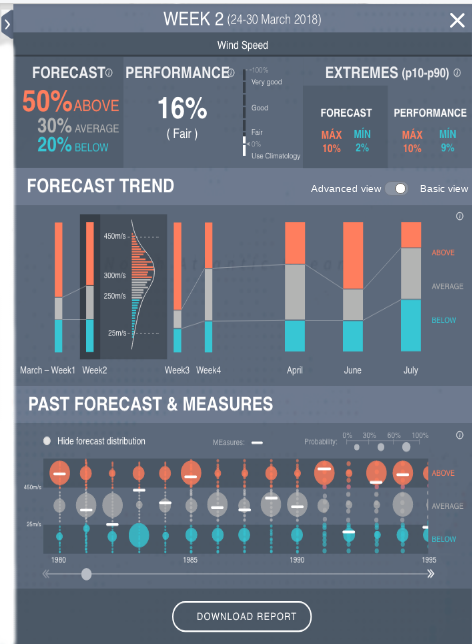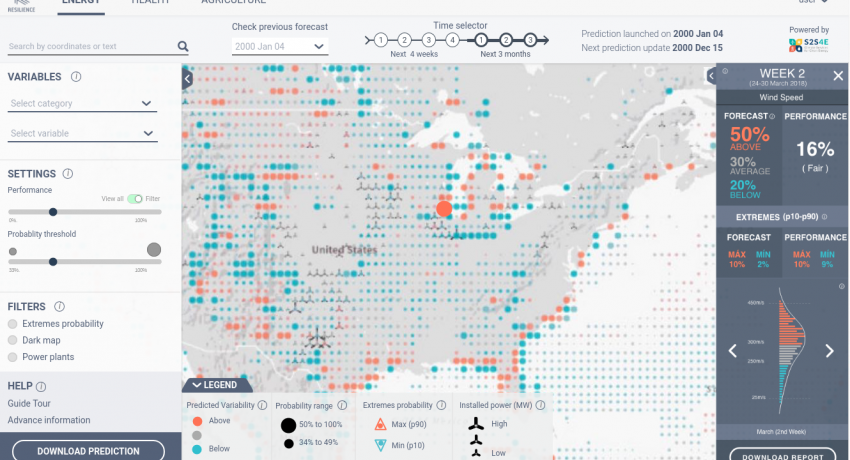This is a story about having the relevant information to make the right decision.
June 2015 was thought to be the typical end-of-spring in Sweden, a bit rainy and with a fair amount of snow to melt in the mountains. Built in the upper part of Umeälven river and run by Vattenfall, the Stornorrfors hydropower plant was releasing water from the reservoir for power production, as usual. The release rate was enough to accommodate extra water expected from snowmelt and occasional precipitation, in a delicate balance until the end of summer. Every drop down the pipe meant money for the company.
However, June 2015 was not the typical end-of-spring in Sweden after all. The amount of snow had been vastly underestimated, and early July turned out to be rainier than average. Surprised by the unexpected combination of intensive snowmelt and increased precipitation, the operators of the reservoir saw it filling up too early. With water still coming down the hills, they had to release an extra amount to prevent the dam from spilling over. The consequence: cubic meters of profits being lost downstream.
Why did Vattenfall operators not foresee what was coming?
Their decision-making at that time relied on the analysis of past climatology, that is, the historical average climate patterns for as many as possible ends of spring. But we know averages have a hard time predicting anomalies like that of June 2015. Had they had access to a trustworthy seasonal forecast, adapted to their needs, things would have been a lot different.
S2S4E, our simulation-based project on sub-seasonal to seasonal forecasts for energy, aims at making the  difference. Not just for its state-of-the-art forecasting technology, but for its latest development: the Decision Support Tool (DST). Once fully functional, the DST will provide weekly to monthly forecasts on temperature, wind speed and precipitation at a global scale. This service, co-created with leading energy companies in Europe, is being tailored to the needs of the sector and will play a strategic role in mainstreaming climate predictions. Fighting the structural risks of renewable energy sources, like supply and demand imbalance or climate anomalies, would bring a better decision-making horizon while pushing the limits for the adoption of these technologies in the energy supply mix.
difference. Not just for its state-of-the-art forecasting technology, but for its latest development: the Decision Support Tool (DST). Once fully functional, the DST will provide weekly to monthly forecasts on temperature, wind speed and precipitation at a global scale. This service, co-created with leading energy companies in Europe, is being tailored to the needs of the sector and will play a strategic role in mainstreaming climate predictions. Fighting the structural risks of renewable energy sources, like supply and demand imbalance or climate anomalies, would bring a better decision-making horizon while pushing the limits for the adoption of these technologies in the energy supply mix.
Tested and approved
“It will be a useful tool, especially for advanced users,” said Laurent Dubus, researcher at the R&D section of Électricité de France (EDF) and one of the S2S4E partners. “In the past, you just had a 3-month average for seasonal forecasts. With this tool, you will have monthly resolution and even weekly for the first month ahead, which is something good, as long as users are aware of the limitations and well informed about what they can or cannot expect from the predictions (which, by the way, is also displayed by the DST)”. In his opinion, one of the best things about the new DST is that “it provides information for all grid points. This has not been seen anywhere else so far, and it is the main difference with other DSTs that I know”.
Not directly involved in the project, the European Centre for Medium-range Weather Forecasts (ECMWF) is one of the reference institutions in the field of seasonal forecasts. Carlo Buontempo, Sectoral Information System Manager at the Copernicus Climate Services section, is very positive on this new development: “I like the design of the S2S4E DST. It looks very professional”. Buontempo considers the tool flexible enough to be suitable for those users who are not too familiar with S2S data as well: “CEOs and policy-makers prefer a clear visualisation rather than plain data. For them, DSTs can be really useful tools”.
Innovations take time to gather momentum and become a reference and, as Buontempo points out, DSTs are new technologies: “we have to let the users experiment with them. Success will be measured in terms of the interest raised among the community and on the benefits they can have by integrating the DSTs into their own decision-making systems”. He also highlighted that this statement is especially true for small to medium companies who “can’t invest resources in a full in-house data analysis department. They could take advantage of a DST like the one being developed”. In the growing sector of renewable energies, opportunities offered by the exploitation of a tool like the DST are plenty.
Engaging with people open-mindedly
Despite being young, the history of DSTs allows for a list of quite successful prototypes. Isadora Jiménez, science communication specialist at the Barcelona Supercomputing Center (BSC), remembered the past approaches that gave birth to S2S4E: “The DST is not a new idea. It comes from previous initiatives such as Project Ukko, from the EUPORIAS project and the Resilience prototype”.
Her experience in Ukko and Resilience is a very valuable asset for the project at hands and Jiménez have the perfect recipe, “If you want to develop a really useful product, you need to engage with a lot of people: scientists, communication experts, designers… and be very open-minded”.
The initial tests of the interface design are promising, and testers are all excited about the next operational version of the S2S4E DST, before its official launch scheduled for spring 2019. Providing the best information in the most suitable format remains the main objective to keep in mind for the near future. It will largely contribute in helping managers of renewable power plants, energy traders and grid operators making the right decisions at the right time, so that no profits will ever spill over a dam anymore.
Written by Martí Badal / BSC.

